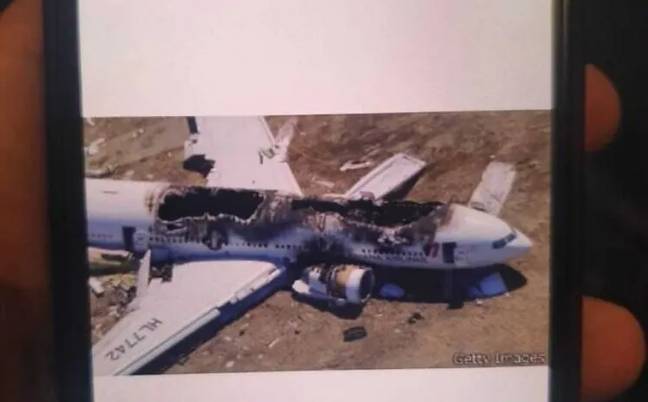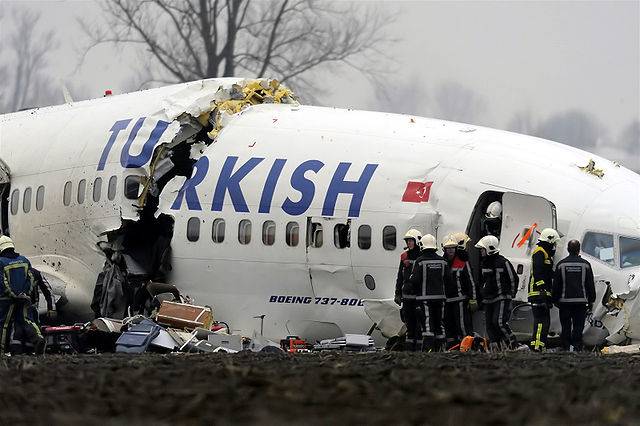The story of Tehching Hsieh, a performance artist who went to extreme places mentally for the sake of his art.
Tag: Xen – The Zen of the Other
The banks collapsed in 2008 – and our food system is about to do the same
Massive food producers hold too much power – and the regulators scarcely understand what is happening. Sound familiar?
For the past few years, scientists have been frantically sounding an alarm that governments refuse to hear: the global food system is beginning to look like the global financial system in the run-up to 2008.
While financial collapse would have been devastating to human welfare, food system collapse doesn’t bear thinking about. Yet the evidence that something is going badly wrong has been escalating rapidly. The current surge in food prices looks like the latest sign of systemic instability.
Coyotes and Town Dogs
Riding the rails with YouTube’s hobo vloggers
Critics say their content is dangerous and irresponsible, but these influencers can’t get enough of the train-hopping life.
Dancer vividly remembers the first time he hopped a freight train.
It was a warm October day in 2020, and he’d stationed himself north of Longmont, Colorado, near the railway yard, where the train often rolls through town. He’d been standing next to a tree for hours, debating whether he was really going to go through with this dangerous act — and trying to ease the butterflies in his stomach.
He’d learned about train-hopping in 2017, after discovering the videos of James “Jim” Stobie, a prolific vlogger known online as Stobe the Hobo. Stobie died later that same year, after getting into an accident while hopping trains in Maryland. He was 33. Nevertheless, Dancer was inspired by the key message of Stobie’s videos: that viewers should see the often-unexplored areas of the U.S.
READ THE ENTIRE ARTICLE
When Felonies Become Form: The Secret History of Artists Who Use Lawbreaking as Their Medium

COURTESY THE ARTISTS
Artists have long gotten away with murder, sometimes literally. After Benvenuto Cellini killed his rival, the goldsmith Pompeo de Capitaneis, in 1534, Pope Paul III—a Cellini fan—reportedly pardoned the Florentine artist, declaring that men like him “ought not to be bound by law.” In 1660 the Dutch painter Jacob van Loo stabbed a wine merchant to death during a brawl in Amsterdam, and then fled to Paris. But, as the art historians Rudolf and Margot Wittkower have noted in their vigorously researched 1963 treatise on the behavior of artists, Born Under Saturn, van Loo had no problem being elected to the Royal Academy there just two years later. His reputation as an artist was what mattered.
Artists have not only indulged in criminal behavior and then been forgiven for it, by philosophers and historians, princes and popes, they have also sometimes openly advertised it. “I do not understand laws,” Arthur Rimbaud wrote in 1873, summing up the attitude of the renegade artist. “I have no moral sense. I am a brute.”
From Hero to Trickster – Humanity’s Initiation
The reign of the Hero has come to an end. As humanity faces increasing crisis and collapse, we come to a threshold where the archetype of the Hero can no longer be our saviour. We have entered a liminal time – a space between stories – and so we must bend and instead look to, and learn from, the boundary-crossing, shape-shifting Trickster.
Join Ben Murphy and John Wolfstone as they explore the significance of this cultural transition and how it applies to each of our lives.
Crimes of the Future: David Cronenberg Expects ‘Revulsed’ Walkouts of the Movie
And the legendary director says, “that would be OK.”
Original story: https://www.ign.com/articles/crimes-of-the-future-david-cronenberg-expects-revulsed-walkouts
Crimes of the Future director David Cronenberg is expecting a major response to his graphic new body horror film.
During an interview with Deadline, the 79-year-old filmmaker said he’s expecting a lot of people to be ‘revulsed’ by the movie – and anticipates walkouts.
“There are some very strong scenes,” he explained. “I mean, I’m sure that we will have walkouts within the first five minutes of the movie. I’m sure of that. Some people who have seen the film have said that they think the last 20 minutes will be very hard on people, and that there’ll be a lot of walkouts. Some guy said that he almost had a panic attack.”
“I say, ‘Well, that would be OK’,” said Cronenberg about the potential reactions to Crimes of the Future. “But I’m not convinced that that will be a general reaction. I do expect walkouts in Cannes, and that’s a very special thing. [Laughs] People always walk out, and the seats notoriously clack as you get up, because the seats fold back and hit the back of the seat. So, you hear clack, clack, clack. Whether they’ll be outraged the way they were with Crash, I somehow don’t think so. They might be revulsed to the point that they want to leave, but that’s not the same as being outraged. However, I have no idea really what’s going to happen.”
Crimes of the Future is a twisted return to sci-fi horror for Cronenberg, who previously brought us the likes of Scanners and Videodrome.
Here’s the official synopsis: “As the human species adapts to a synthetic environment, the body undergoes new transformations and mutations. Accompanied by his partner, celebrity performance artist Saul Tenser showcases the metamorphosis of his organs. Meanwhile, a mysterious group tries to use Saul’s notoriety to shed light on the next phase of human evolution.”
The Next Civil War: Dispatches from the American Future

Link: http://library.lol/main/EDFC8BE20C798A1BBBD2724391066755
Description:
In this deeply researched work of speculative nonfiction that reads like Ezra Klein’s Why We’re Polarized crossed with David Wallace-Wells’ The Uninhabitable Earth, a celebrated journalist takes a fiercely divided America and imagines five chilling scenarios that lead to its collapse, based on in-depth interviews with experts of all kinds.
On a small two-lane bridge in a rural county that loathes the federal government, the US Army uses lethal force to end a standoff with hard-right anti-government patriots. Inside an ordinary diner, a disaffected young man with a handgun takes aim at the American president stepping in for an impromptu photo-op, and a bullet splits the hyper-partisan country into violently opposed mourners and revelers. In New York City, a Category 2 hurricane plunges entire neighborhoods underwater and creates millions of refugees overnight—a blow that comes on the heels of a financial crash and years of catastrophic droughts— and tips America over the edge into ruin.
These nightmarish scenarios are just three of the five possibilities most likely to spark devastating chaos in the United States that are brought to life in The Next Civil War, a chilling and deeply researched work of speculative nonfiction. Drawing upon sophisticated predictive models and nearly two hundred interviews with experts—civil war scholars, military leaders, law enforcement officials, secret service agents, agricultural specialists, environmentalists, war historians, and political scientists—journalist Stephen Marche predicts the terrifying future collapse that so many of us do not want to see unfolding in front of our eyes. Marche has spoken with soldiers and counterinsurgency experts about what it would take to control the population of the United States, and the battle plans for the next civil war have already been drawn up. Not by novelists, but by colonels.
No matter your political leaning, most of us can sense that America is barreling toward catastrophe—of one kind or another. Relevant and revelatory, The Next Civil War plainly breaks down the looming threats to America and is a must-read for anyone concerned about the future of its people, its land, and its government.
Ted Kaczynski – Industrial Society and Its Future (Unabomber Manifesto) a Collection
Ted Kaczynski – Industrial Society and Its Future (Unabomber Manifesto) Audiobook
THE GRAPHIC NOVEL: https://libgen.rocks/ads.php?md5=e96e321397dc6714a712f0d89f152cb8
 Valentín Ramón Menendez, Theodore John Kaczinsky - Ted Kaczynski's Industrial society and its future_ The graphic novel (2021) - libgen.li
Valentín Ramón Menendez, Theodore John Kaczinsky - Ted Kaczynski's Industrial society and its future_ The graphic novel (2021) - libgen.li
Podcast
Breaking Down: Collapse
Episode 86 – Anti-Technology and the Unabomber with David Skrbina
This week we interview David Skrbina, an author and professor who writes about his anti-technology philosphy. David has written a book with Ted Kazynski (the Unabomber) who holds a similar philosophy.
In the interview, we discuss David’s philosophy, his vision for the future, as well as his book with Ted Kazynski.
You can find his books here: Confronting Technology, Metaphysics of Technology, Technological Slavery.
If you’d like to join David’s “Anti-Tech Collective”, you can do so here.
David Skrbina (sker-BEE-na), PhD, was a senior lecturer in philosophy at the University of Michigan, Dearborn from 2003 to 2018. He taught a graduate course in Technology and Sustainability at the University of Helsinki in fall, 2020. His areas of interest include philosophy of mind, eco-philosophy, philosophy of technology, and environmental ethics.
Flight Aborted After Eerie Pictures Mysteriously Sent To Passengers’ Phones

Original article: https://www.unilad.co.uk/news/flight-aborted-eerie-pictures-sent-passengers-phone-plane-crashes-20220510
A flight was postponed just before takeoff after a number of passengers received some eerie pictures on their phones.
According to local reports, the passengers were set to travel from Israel to Turkey, but the pilot decided to turn back to the terminal at Ben Gurion Airport amid the panic.
Israeli publication Kan News noted how the images showed a series of plane crashes, with no one knowing who was responsible for sending them.

One passenger who was aboard the flight when it was aborted told the outlet: “We got on the flight and the plane started moving.
“Most people received a request for a photo confirmation in AirDrop, some approved and some did not.
“The plane stopped and the flight attendants asked who got the pictures.”
As police swarmed the plane, the passenger said they were escorted off the flight, adding: “The airport manager told us there was a security incident.
“They took all our luggage out of the plane for a second check.”

Adding to this, local radio broadcaster Galei Zahal reported that 166 passengers received the unnerving images.
After they notified the cabin crew of the unusual activity, the pilot decided to return the Turkish Airline plane to have the incident investigated by security.
Among the pictures were two of wreckages, one of which was of a Turkish Airline plane that crashed in Amsterdam in 2009 and led to the deaths of nine passengers.
A second showed the 2013 wreckage of the Asiana Airlines Flight 214 that crashed in San Francisco, killing three.


